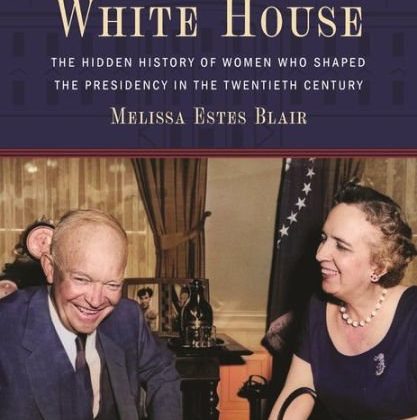

Melissa Blair is Associate Professor and Department Chair of History at Auburn University. This interview is based on her new book, Bringing Home the White House: The Hidden History of Women who Shaped the Presidency in the Twentieth Century (University of Georgia Press, 2023).
JF: What led you to write Bringing Home the White House?
MB: My initial research question focused on how presidential campaigns appealed to women voters. The argument in the history & political science scholarship (sometimes explicitly, sometimes more implicitly) is that once politicians figured out that women didn’t vote as a single bloc by the end of the 1920s, they stopped caring about women voters until feminists made them care again in the late ‘60s. I went into presidential libraries to find out if that was really true, and discovered the five women I write about.
JF: In 2 sentences, what is the argument of Bringing Home the White House?
MB: Bringing Home the White House shows that, through the work of the Women’s Divisions of the Democratic and Republican National Committees, women were at the heart of presidential campaigns from the 1930s through the 1950s, both as close advisors to presidents and as the “saleswomen of the party” throughout the country. The home and women’s lives were deeply politicized throughout this period, but women political activists also spoke to and were active on all issues, not only “women’s issues.
JF: Why do we need to read Bringing Home the White House?
MB: Returning women to the center of politics in this era shows that these decades were not times when women withdrew from politics. That’s important both because it disrupts the idea of “waves” of feminism but also because it shows that the idea of the midcentury home as a space free of politics is a complete myth. That time period is so often talked about as one when divisive political issues weren’t in the home or weren’t things that families were talking about. My research shows that not only is that not true, both major parties were actively encouraging women to be political actors and presidents from both parties valued their work.
JF: Why and when did you become an American historian?
MB: I have always wanted to be a historian, for as long as I can remember. My mother took us to lots of historic sites when I was a child, and I am the generation of female historians whom the very first American Girl dolls hit just right. There’s actually scholarship on how many of us who became historians from my generation can point to those dolls and their books as important pieces in influencing our paths. And it’s a big part of why I’m a women’s historian. Seeing girls’ and women’s perspectives on history centered at such a young age made a very deep impact.
JF: What is your next project?
MB: The next project is going to focus on Bertha Adkins, the woman who ran the Women’s Division of the RNC in the 1950s. If you look at my book she’s the woman in the cover photo, sharing a laugh with President Eisenhower in the Oval Office. And she was a lesbian. Her partner, Winifred Helmes, kept a diary of their time in Washington in the 1950s, and I have a clear chronology of their professional lives from the early 1950s until Adkins’ death in the early 1980s. So I want to really focus on them and unpack the lives of this midcentury lesbian power couple. They were in positions of power when we really do not expect them to be there. I’m fascinated to do a deep dive into their lives and see what it tells us about women, about politics, and about the changing norms of the 20th century to trace these two women through these rapidly changing decades.
JF: Thanks, Melissa!